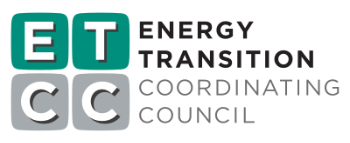Project Info
ACTIVE
Project Title
Return-to-primary Central HPWH System Field Demonstration
Project Number ET25SWE0017 Organization SWE (Statewide Electric ETP) End-use Water Heating/DHW/HPWH Sector Commercial Project Year(s) 2025 - 2026Description
CHPWH systems in multifamily and commercial buildings serve two purposes: heating city water entering the building to usable hot water temperatures for occupants and maintaining the water temperature in the distribution and recirculation system. Temperature maintenance typically makes up about 30% water heating system loads in multifamily buildings and poses challenges for heat pump system designs. HPWHs are most efficient with cold entering water temperatures but recirculation loops bring water back to the mechanical room at 105-115F, too warm for efficient heat pump operation in many instances. This has led to standard CHPWH systems relying on separate temperature maintenance tanks with electric resistance heaters (e.g., “swing tanks”). Swing tank designs work well for CO2 heat pumps which can produce very hot primary storage water in buildings with relatively efficient distribution systems. However, swing tank designs do not work as well for buildings with high recirculation losses and with lower temperature refrigerants such as R134, R410, R513, and R32. In these cases, the swing tank uses significant amounts of electric resistance which leads to higher peak electrical demand, emissions, costs, and lower system efficiency.Several manufacturers and practitioners have proposed to return the recirculation water directly to the primary storage rather than using a swing tank: “Return-to-Primary” (RTP). This has the advantage of using the primary heat pump to reheat the recirculated water. RTP configurations have upside potential to reduce first costs, energy costs, physical footprint, control complexity, and electrification impacts on electrical infrastructure. However, RTP design can also increase mixing of the primary storage tank which can lower the heat pump efficiency, increase required storage volume, and impact the ability of the system to provide load shifting. Without careful controls and design, the higher temperatures of the return water can also conflict with some CO2 heat pumps as it can be above the maximum inlet water temperature to initiate the heat pump.Thermal stratification in the storage tanks is advantageous as it allows for cooler water to be returned to the heat pumps and allows for the preservation of delivery-temperature water at the top of the tank. Recent PG&E lab testing shows that partial tank stratification may be possible with continuous recirculation to primary storage tanks and AEA has shown that RTP may be effective in a CO2-based CHPWH system. These initial tests suggest that RTP designs could be optimal for cost, size, complexity, and performance and warrant further research given the potential upside for equitable, cost-effective decarbonization of hot water systems. The proposed research is to demonstrate and measure a RTP CHPWH system design, build RTP configurations into the free-to-use Ecosizer sizing tool, and validate that sizing calculator with the demonstration project. The project team has identified a site to demonstrate the installation of an RTP system. This project will add measurement and verification to track water temperatures, flow, and energy use for system performance evaluation. The performance of this project will be compared to data from existing swing tank designs using the same heat pump technology. The team will also deploy load shifting methodologies and assess each system’s ability to shift loads to off-peak periods.
